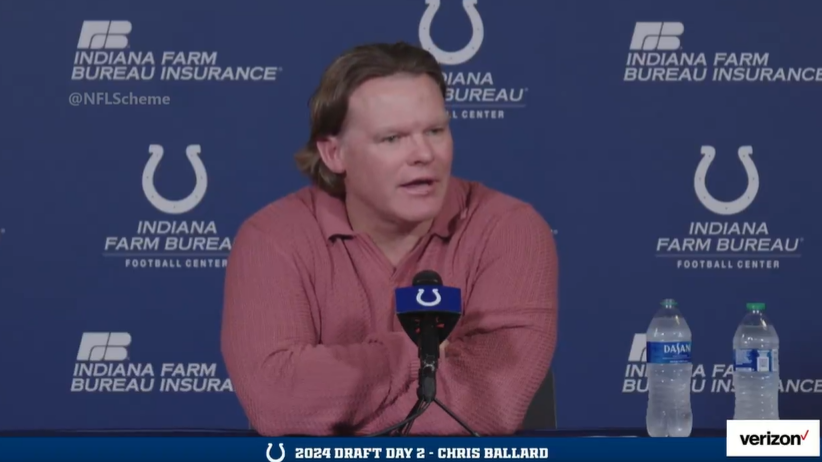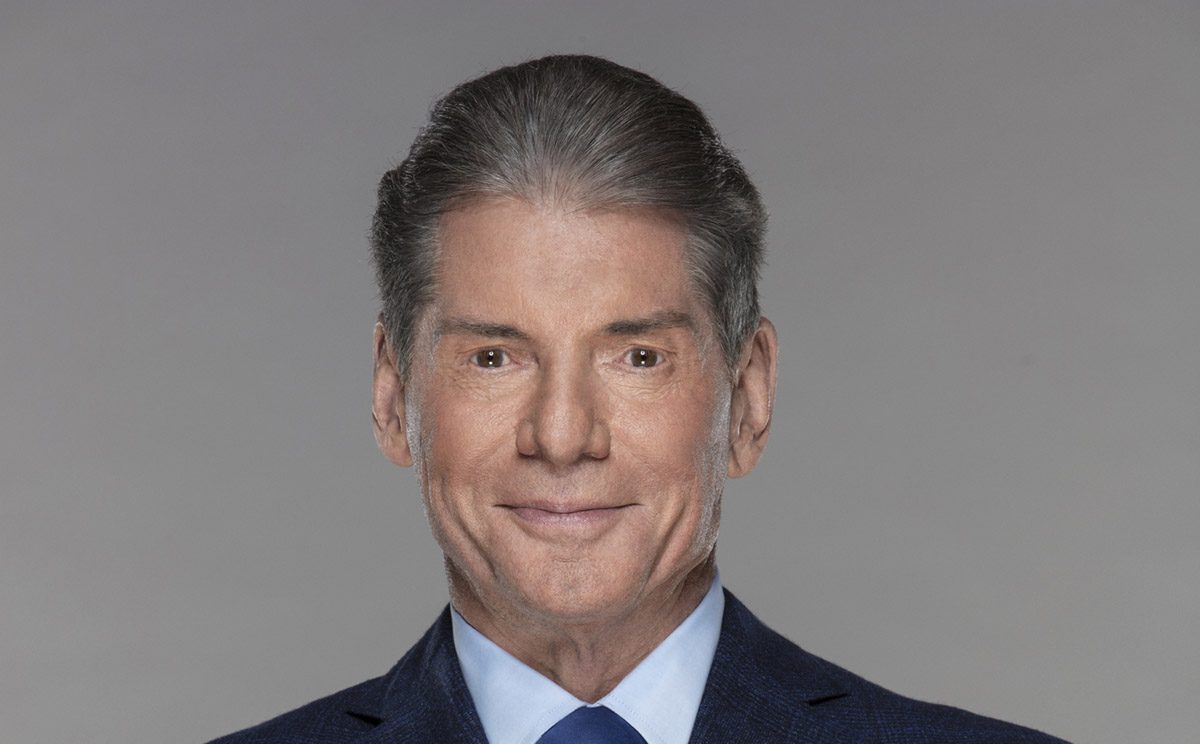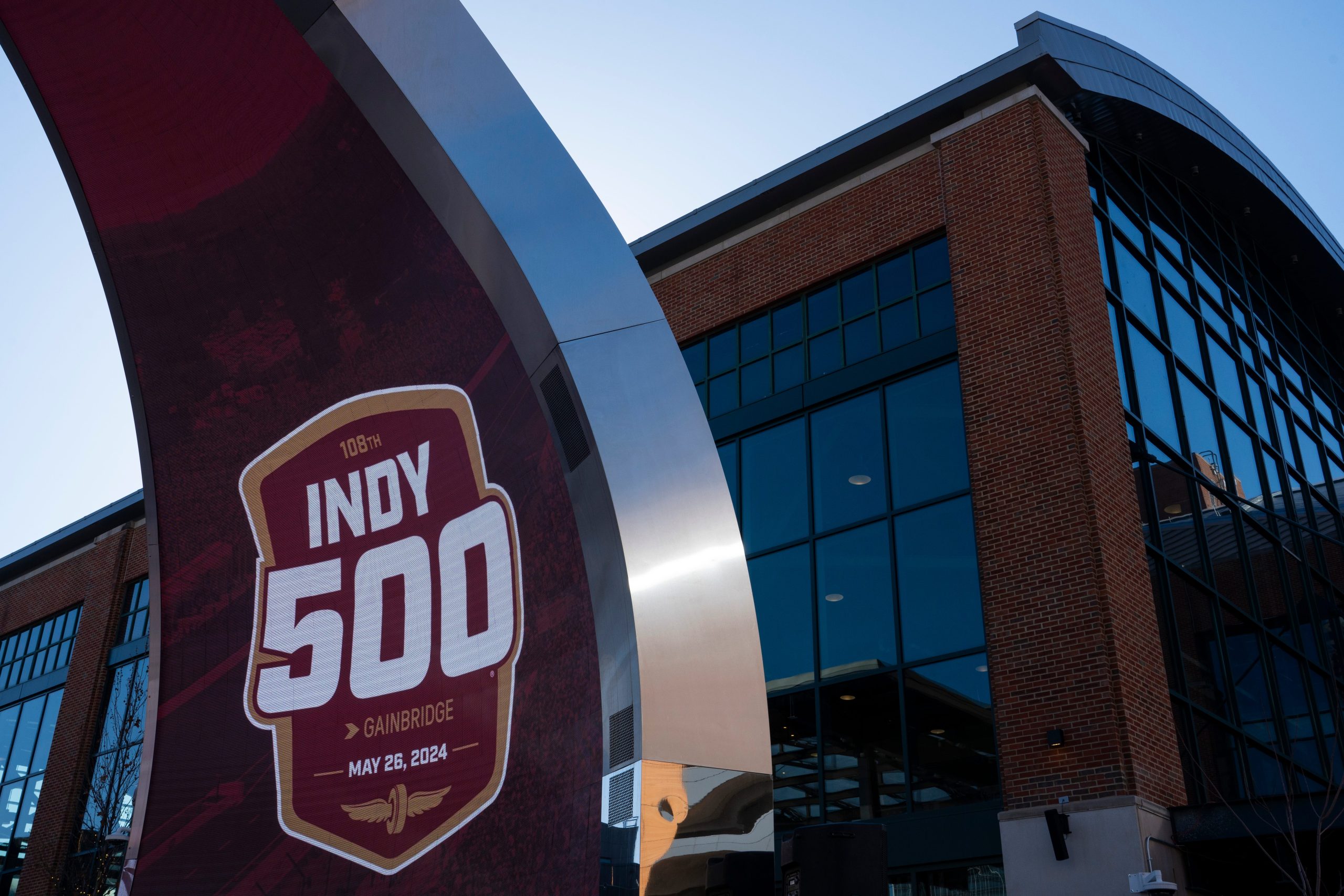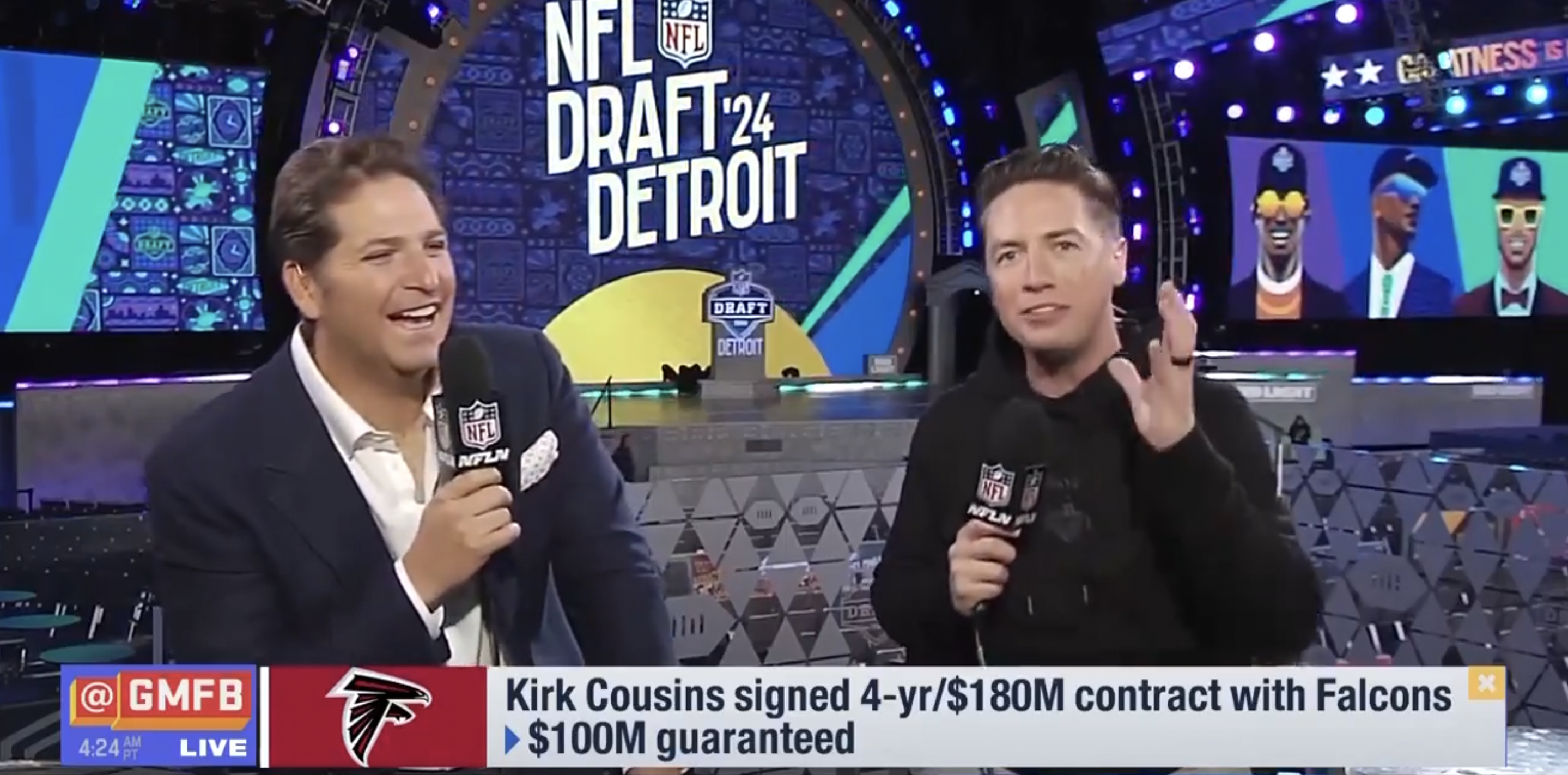It’s not a hard and fast rule, but when considering the shows considered the best American sitcoms of the past 40 years, it usually took about three seasons for each of them to finally figure themselves out and perfect the model.
According to Larry David, season three of “Seinfeld” was the turning point for the series as that’s when they finally started writing nonlinear storylines and peppering episodes with multiple stories. The clunky first season of “The Office” showed its potential, but didn’t become a fully formed comedy juggernaut until season three. Depending on who you ask, “Friends” really figured out its formula during season two and certainly by season three. “Parks and Recreation” didn’t hit its stride until the third season when they shuffled the cast around into the version fans love most.
The point being that for something to become truly memorable, it often needs a few iterations to get there. It needs time to throw everything against the wall and find out what sticks, knowing that some of what they throw is going to suck. It needs the backing of people who see the bigger vision and are willing to wait to get there.
All of which is not to say that I think the XFL is going to be the “Seinfeld” or “The Office” of professional football leagues, but if the opening weekend of the new and improved version is any indication, the potential remains there to make this a viable alternative to the NFL. It’s just going to require the powers-that-be to sort through some more growing pains and grant them a third season. Once they get to that elusive third season… who knows.
Of course, I’m basing all of this on one weekend and four games. Still, there was a lot to be learned in that 48-hour window, not the least of which was the proper names of each XFL franchise. Let’s take a look back to see what other learnings we came away with from the XFL’s second season* and what it may portend for the future of the league.
*Clearly, this version of the XFL is treating itself as a separate entity from the 2001 version. They referred to everything that happened this weekend as a “first.” The stats from 2001 were also no longer relevant. But, like, they’re both called the XFL. We can’t pretend that first one didn’t exist. C’mon, now.
NO POMP, EVEN LESS CIRCUMSTANCE
For those of us who watched the opening weekend of the original 2001 XFL, we remember what a spectacle the whole thing was made out to be. There were fireworks and pyrotechnics. The camera ogled cheerleaders from dubious angles. Then it turned towards a man in the crowd wearing a cowboy hat double-fisting Bud Lights. Vince McMahon walked to midfield and snarled into a microphone, “Ladies and gentlemen… This… Is… The XFL!” The fireworks blasted once more and the Las Vegas crowd went nuts.
I was reminded of all that pomp and circumstance when the first 2020 XFL broadcast began on ABC. We were treated to some locker room footage, followed by a spoken word montage, and then… self-deprecating humor?
"You know when the Seattle Dragons and DC Defenders get together, you can throw out the record books." #XFL2020 pic.twitter.com/nR4YKaB9ax
— Awful Announcing (@awfulannouncing) February 8, 2020
Within minutes, the game between the Seattle Dragons and DC Defenders was underway and we barely had a moment to recognize the importance of what we had seen. Or more importantly, the importance of what we hadn’t seen.
No fireworks. No pyro. No scantily clad women. No spectacle.
And it’s was the perfect call. The focus was immediately on the football and the coaches and players involved. Talk about a lesson learned for Season Two. That was something carried forward into all four games as well. No need to try to trick the audience into thinking they’re seeing anything bigger than a football game. The viewing experience was better for it.
LEARN THE RULES AS YOU GO
Much was made of all the rule changes and gameplay tweaks that the XFL would bring with it. We heard a lot about the de-emphasis on kicking, the varied post-touchdown conversion options, the kickoff changes, and how the passage of time would be followed differently. And all of those things played out in each XFL game. Yes, there was enough explanation along the way to give viewers a chance to understand what they were seeing and why it might make sense. But the broadcasts wisely didn’t get bogged down in the minutia of the rule changes.
Oftentimes, there is so much Sturm und Drang around how amazing the league’s unique rules are. The original XFL couldn’t get enough of itself and the “scramble” and lack of fair catches. That felt like another lesson learned, as the changes were presented but the results acted as their own promotion for the most part.
https://twitter.com/sp00kyjeff/status/1226246497253183489
There was, for the most part, a level of trust with the audience to figure out the details along the way. It was appreciated and seemed purposeful as part of the strategy to let TV viewers settle in rather than getting hit over the head by all the EXTREMENESS of it all.
The one-, two-, and three-point conversation certainly required some explanation, but if you watched enough XFL this weekend, you pretty much had the whole system figured out quickly. And more important than why the league made the change was how the change impacted the game strategy. That’s where the fun came in.
ACCESS DOES NOT ALWAYS EQUAL EXCITEMENT
One of the most noticeable aspects of the broadcast in all four games was the in-game sideline access granted to each network. Unlike NFL games, sideline reporters had the ability to grab players and coaches aside, even seconds after big plays, and speaking directly with them. On paper, that’s a fantastic opportunity for TV audiences. No need to wait for the postgame presser to find out what the player was thinking on that play, you get to find out right here and now while they’re still in the emotions of it.
In reality, the end result is more of a mixed bag. Especially when you consider that, most of the time, you’re just getting a generic, canned answer sooner than later.
The first XFL game of the season between the Dragons and Defenders was a bit of an anomaly on the weekend as it was the only game featuring two sideline reporters. As such, they were able to cover more ground. And clearly, the mandate had been handed down to them to cover as much ground as possible. That led to A LOT of in-game interviews.
Some were interesting, like when Dianna Russini interviewed Defenders kicker Ty Rausa minutes after he missed a crucial field goal.
You miss a kick in the XFL? you're going to have to answer to it immediately on the sidelines by a reporter [in this case @diannaESPN]https://t.co/SuSVUcMicx
— Dov Kleiman (@NFL_DovKleiman) February 8, 2020
Others led to awkward exchanges, like this non-interview interview following a pick-six interception.
Maybe not the best time for an interview opp. #XFL2020 pic.twitter.com/m0JghP3LRf
— Awful Announcing (@awfulannouncing) February 8, 2020
And of course, given that this was all happening on live TV, the potential was always there for an F-bomb to slip through. And we didn’t even make it out of the first game without one…
Apparently there's still a little bit of 2001 XFL in there after all… #XFL2020 pic.twitter.com/Y5AE2Mh77z
— Awful Announcing (@awfulannouncing) February 8, 2020
It should be noted that the dump button operator was on their game following that incident.
So while the in-game access was a cool bonus feature, that first broadcast left cause for concern, not only because a decent percentage of the interviews yielded nothing of interest, but the sheer number of them overwhelmed the rest of the broadcasting team and distracted from the actual game.
However, all three successive games on the weekend only featured one sideline reporter and each broadcast was better for it as the sideline access was still a part of the broadcast, but not quite as intrusive. You could make the case that Fox’s Saturday broadcast of the game between the Houston Roughnecks and LA Wildcats swung too far in the other direction. Sunday’s games also seemed to be searching for the right balance when it came to sideline interviews, with mixed results.
These kinds of things are bound to happen with in-game sideline interviews, but very well handled. #XFL2020 pic.twitter.com/Cj46bQ5R1D
— Awful Announcing (@awfulannouncing) February 9, 2020
The late Sunday game featured Pat McAfee on the sidelines and he seemed tailor-made for the broadcasting style that the league is going for. His reaction to Marquette King’s perfect punt that was ruined by an overzealous special teams player, followed immediately by an interview with that player, was exactly the kind of moment the league was envisioning.
“I’m gonna go talk to the guy that ruined that perfect punt” – @PatMcAfeeShow, legendary sideline reporter pic.twitter.com/1fElHum1pn
— Tyler Castillo (@tjc_12) February 10, 2020
PLAYCALLING WITH PURPOSE
If there was an aspect to the game-watching experience that required the most getting used to, it was the overlapping of audio from the broadcasting booth, sideline reporters, coaches on the sidelines, and players on the field. It wasn’t uncommon to hear the color commentator try to explain something while the coaches barked out plays and the players on the field communicated with one another. It often made for a messy audio experience. For some, it was an interesting way of experiencing the game. For others, it felt like overload.
It wasn’t until the early game on Sunday when we started to find a good balance between everything. Greg Olsen did a really good job of explaining what the play calls meant, which ended up being a very critical aspect of the TV experience. Otherwise, you were just listening to grown men say nonsense phrases like “Solo Right Nasty, Odd Key Osborne Balloon” without much context for what it might mean.
One quarter in and the XFL has been…pretty good. The football has been enjoyable. The lack of off-field antics has been a blessing. And the playcalling has been entertaining. #XFL2020 pic.twitter.com/xdPUbxrsgZ
— Awful Announcing (@awfulannouncing) February 8, 2020
This will continue to be a bit of a learning experience as we go. I didn’t come away feeling as though I needed to know what the coaches and players were saying at all times and it seemed to work better when doled out when necessary. The XFL was throwing so much information at us all weekend long, there’s only so much that can stick.
Of course, having coaches and players mic’d up is still a very good thing, since it can give us moments like this…
Wonder if he cares. #XFL2020 pic.twitter.com/S2jdjY6uhd
— Awful Announcing (@awfulannouncing) February 10, 2020
THE CHARLES KANOFF CONUNDRUM
Both the Fox and ESPN teams will likely button up their sideline reporting strategies for the weeks ahead but there was one instance that stood out from the weekend that they’ll want to hone in on as not to repeat it.
The XFL is going all-in on how they’re providing in-game access and we saw plenty of that this weekend. We saw players interviewed immediately after great plays and immediately after bonehead plays. We saw interviews with coaches following touchdowns and we heard the staff talking over why a play didn’t work. We got a lot of great access but with that access comes expectation.
Chances are you didn’t know much about Charles Kanoff before this weekend. Hell, even if you watched him quarterback the LA Wildcats this weekend you still probably don’t know that much about him. But if you were like me, you found him to be one of the most intriguing characters on the weekend. That’s because there were multiple instances during the game when we were able to not only see how frustrated Kanoff was getting, but we also got to hear him pout about it as well.
Having this kind of authentic moment access will ultimately be what the XFL wants to focus on over generic sideline interview sound bites. #XFL2020 pic.twitter.com/mAJffvRQ8I
— Awful Announcing (@awfulannouncing) February 8, 2020
This was a wonderful authentic moment that you just can’t get in the NFL. We’re watching the struggle between a new coach and a frustrated quarterback play out in realtime. Even if you think Kanoff is being whiny here, you’re instantly invested in what’s going on. Maybe you’re rooting against him now. Maybe you’re intrigued to see what he’ll say next. Whatever it is, he is now a character we want to follow. And later on, when he returns to the sidelines to passive-aggressively push his coach to make the call he wants, we are all-in on what will happen next.
This extra access will certainly help the XFL establish some much-needed "characters." Whether or not you like the character you are portrayed as, well… pic.twitter.com/4aDsG6cyg1
— Awful Announcing (@awfulannouncing) February 9, 2020
Things don’t go well and, at one point, Kanoff is benched. We get some great camera shots of Kanoff standing on the sidelines next to his coach while his backup enters the game. And then we watch in horror as the backup throws an interception.
Now, given how we’re invested in Charles Kanoff The Character, and knowing what we know about sideline access, we can assume that we are going to get a live interview on the sidelines with him to hear how he’s feeling about all of this. It’s going to be great because we’ve watched him pout all game long and there’s a decent chance he’s going to throw his teammates or coach under the bus live on national television.
But it never happens.
A sideline interview with Kanoff following his benching and a subsequent INT seems REQUIRED right now. #XFL2020
— Awful Announcing (@awfulannouncing) February 9, 2020
Kanoff eventually goes back into the game and then gets injured. And once again, it seems like this is somebody we need to be hearing from. We’re here because we’re supposed to invest ourselves in these guys, learn why we need to root for or against them. But despite the access being available and expected, we never get it.
"…and he is NOT happy." #XFL2020 pic.twitter.com/KCUqas3KSc
— Awful Announcing (@awfulannouncing) February 9, 2020
It wasn’t the end of the world, but the whole series of events was a reminder that the XFL is setting an expectation and every time they fail to meet that expectation, it will be noticed. And while this isn’t the XFL of 2001 with its phrases on the backs of jerseys and scripted segments, the league does need to establish personalities and characters. Focusing on the coaches will only get you so far. Personally, I’m intrigued to see what Kanoff is like next week and how his team will react to his performance in this game. Hopefully, the broadcasters are paying attention as well.
KEEP PLAYING THAT REPLAY
Getting inside access to the replay booth isn’t new to sports but it does still feel relatively new to American football. Given the way the NFL draws a hard line around access to referees and replay officials, it’s still pretty refreshing to not only see who is making these decisions but how they make them.
How the replay sausage is made, Part 2. #XFL2020 pic.twitter.com/fWOejv27MK
— Awful Announcing (@awfulannouncing) February 8, 2020
We got to see inside the replay booth at every game this weekend. Each one looked mostly the same though with a few tweaks. One booth has a secondary official looking over the shoulder of the replay official (for unknown reasons), but the process pretty much always played out the same. The replay official clarified the situation with the head referee, walked everyone through the dilemma, came to a decision, and then worked out all the details with the ref.
Third person in this XFL replay booth, though it's unclear what they do. #XFL2020 pic.twitter.com/d7AIkYdtlJ
— Awful Announcing (@awfulannouncing) February 9, 2020
You didn’t always come away from each replay interaction agreeing with the decision, but at least you can see a pretty clear chain of command as well as a clear line of thinking to understand. It may not solve all the problems but it does help clarify the situation and prevent any unnecessary conspiracy theories. There’s probably no chance the NFL will adopt this kind of access, but it’s still cool to see in action here.
WHITHER VINCE MCMAHON?
When you think of the XFL, you think of Vince McMahon. The WWE Chairman is intrinsically tied to this football league, what it originally stood for, and what it stands for now. There is no XFL without him. His swagger and bravado loom large over the entire operation and to root for the success of the league is to, in part, root for him. His presence was felt all weekend long.
But in terms of the game broadcasts themselves, Vince was nowhere to be found. Clearly, this was by design and it was an extremely smart decision.
Vince brings a lot of baggage with him, not the least of which is the way he promoted the original version of this league back in 2001. It is evident now that this XFL doesn’t want to be anything like that league. It wants to be a forward-looking, football-first league that is less concerned with spectacle and more concerned with doing whatever it needs to do to make it to 2021.
Other than a few stray mentions of his name here and there, as well as some WWE commercials during the Fox broadcasts, Vince was a non-entity across all four games. When we finally got an interview with XFL Commissioner Oliver Luck at the end of the Sunday evening game, the boss was mentioned in passing but the focus was clearly on the gameplay itself.
Frankly, the more the league can do that, the better off it will be. Just another signal that they’ve learned from the mistakes of Season One and are adapting accordingly.
IT’S IN THE GAME
As noted in our piece on The Comeback about what the XFL needs to do to succeed, it all ultimately comes down to the football itself. “All of the pomp and circumstance, all of the razzle-dazzle, and all of the celebrity cameos in the world can’t mask your crappy football product.”
Thankfully, the football on display this weekend wasn’t that bad. It felt, for the most part, like watching something akin to a Conference USA football game. I know that sounds condescending but it’s not meant to be. Given the quality of play we’ve gotten from past alternative pro leagues, that’s pretty good to have a football product that grades as “passable” in Week One.
Great catch and great sequence of replays. #XFL2020 pic.twitter.com/fwFjf1g09I
— Awful Announcing (@awfulannouncing) February 8, 2020
Certainly, a lot of the credit goes to the quality of coaches and players on each roster, but the tweaks that the league has put in place also seem to make a really big difference. Most of the rules don’t feel different for the sake of being different, they feel different for the sake of actually trying to improve the football-watching experience. Whereas the NFL is too stodgy and steeped in traditions to tweak their formula, the XFL can trot out any change they like so long as it doesn’t make it feel like we’re not watching football anymore.
The kickoff change, which moves the entire coverage team to the 35-yard line where they wait for the returner to field the ball, makes so much sense that the NFL would be stupid not to “adopt” it within a few years. It cuts down on the injury possibilities and it makes things a bit more strategic in the best way.
First kickoff ✅
📺 @ABCNetwork
🖥 https://t.co/Y3eyIb9PfX pic.twitter.com/8uco6BzRDI— United Football League (@TheUFL) February 8, 2020
Some of the other changes are common sense tweaks that make for a great viewing experience but will likely never happen in the NFL. Between the clock’s continuous running in-between plays and after a player runs out of bounds and the shortened 25-second play clock, the pace of play is way more interesting and keeps your attention. The shorter halftimes are a boon for those of us with lives outside of watching football all day.
The unique post-touchdown conversions are perhaps the most out-there changes the league is bringing to the table. No more extra-point kicks. Instead, teams must run another play and, depending on where they run it from, they can earn one, two, or three points. It certainly adds a new layer of intrigue and also forces coaches to be way more strategic.
This one will take a bit more getting used to as it veers the furthest from what we understand as the “correct” way to play American football, but there wasn’t anything inherently bad about it on opening weekend (other than all those missed conversions led to a lot of funky final scores).
—–
It was just one weekend of football games. It tells us a story but it doesn’t tell us the whole story. And as much as we tried to warn the league not to get cocky about their early ratings, they’re going to do it anyway. We all know that it’s the Week Two and Week Three ratings that really matter when talking about the future.
However, the potential was all there for the XFL this weekend. We saw four games of varying excitement and four broadcasts that played out very differently. A lot of unique combinations that revealed many of the benefits of the league’s access as well as many of the potential pitfalls (It’s only a matter of time before a camera operator interferes with a play).
And now, the perils of on-field camera access… #XFL2020 pic.twitter.com/o8wVEFAtfb
— Awful Announcing (@awfulannouncing) February 10, 2020
There’s no guarantee that the XFL will make it to 2021, or even make it long enough to crown a champion this season. The AAF looked pretty solid after Week One and look at what happened to them. However, there is enough groundwork being laid to avoid that fate, that least in the interim. Expect to see the league and the broadcasters continue to tweak the formula as they search for that ideal version that will carry them through.
“Season Three” is potentially there for the XFL this time around, let’s not go quitting our day jobs (as Instagram models) just yet.
And if all else fails, just focus on Weird Cheese Guy. He seemed to know exactly what he was doing.
https://twitter.com/awfulannouncing/status/1226618925443624960







